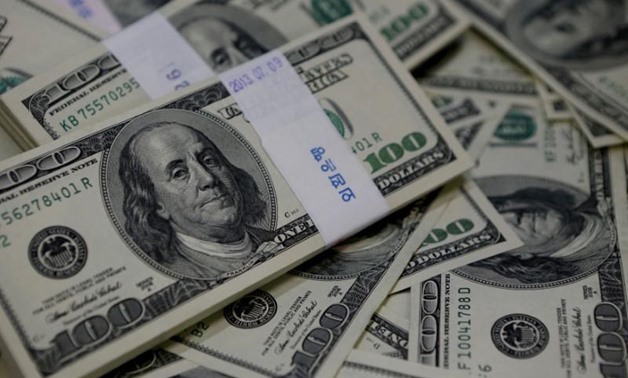
FILE PHOTO: U.S. one hundred dollar bills are seen in this picture illustration, August 2, 2013. REUTERS/Kim Hong-Ji/Illustration
TOKYO/SINGAPORE - 19 March 2018: The dollar held steady against a basket of major peers on Monday as traders braced for new Federal Reserve Chair Jerome Powell’s first monetary policy meeting this week, and as the increased threat of trade protectionism kept markets on edge.
The safe haven yen edged higher as investors’ risk appetite waned, with MSCI’s broadest index of Asia-Pacific shares outside Japan slipping 0.2 percent.
Traders are also nervous after weekend polls suggested a massive drop in public support for Prime Minister Shinzo Abe over his handling of a festering cronyism scandal, which has raised doubts about his ability to press forward with his reflationary economic agenda including monetary easing.
The dollar’s index against a basket of six major peers stood at 90.276. On Friday, the dollar index had hit a two-week high near 90.38, following strong U.S. economic data.
U.S. industrial production surged in February, while the University of Michigan Consumer Sentiment Index rose in March to the highest level since 2004.
The figures reinforced views that the global economy is enjoying strong growth and that the Federal Reserve will raise interest rates at the end of its policy meeting on Wednesday.
With a 25 basis point rate hike seen as a done deal, a key focus is on whether Fed policy makers forecast four rate hikes this year in their “dot plot” projections, instead of three they had projected at a December meeting.
The prospects of more rate hikes typically support a currency because higher interest rates tend to attract funds. However, recent political headlines have drawn more attention as investors fret that U.S. President Donald Trump’s tariff and other protectionist policies could disrupt the U.S. and global economy.
The Canadian dollar has taken the brunt of worries about U.S. protectionism, as investors discount the risk Trump may walk out of the North American Free Trade Agreement.
The Canadian currency slipped to C$1.3111 per U.S. dollar earlier on Monday, its weakest level since June 2017. It last stood at C$1.3102, little changed on the day.
In Japan, domestic politics have been an increasing focal point for traders.
A Nippon TV poll found Abe’s support crumbling some 14 percentage points from last month to 30 percent, the lowest for that poll in Abe’s more than five years in office.
The dollar eased 0.1 percent to 105.84 yen, inching back in the direction of a 16-month low of 105.24 yen set on March 2.
Most traders think the yen will rise if Abe has to resign given that his push for aggressive monetary stimulus has weighed on the currency.
“Japanese political risk will be a market focus for now. There is the risk that ‘Abenomics’ will be rolled back,” said Shinichiro Kadota, strategist at Barclays in Tokyo.
The yen also rose on the crosses, with the euro down 0.3 percent against the Japanese currency at 129.89 yen.
“There’s political concern in Japan, but also a lot of cross/yen selling,” said Tareck Horchani, head of sales trading in Asia-Pacific for Saxo Markets in Singapore.
Against the dollar, the euro fell 0.2 percent to $1.2270.
The common currency has been in a holding pattern since it hit a three-year high of $1.2556 on Feb. 16, with its March 1 low of $1.21545 seen as another support level.


Comments
Leave a Comment